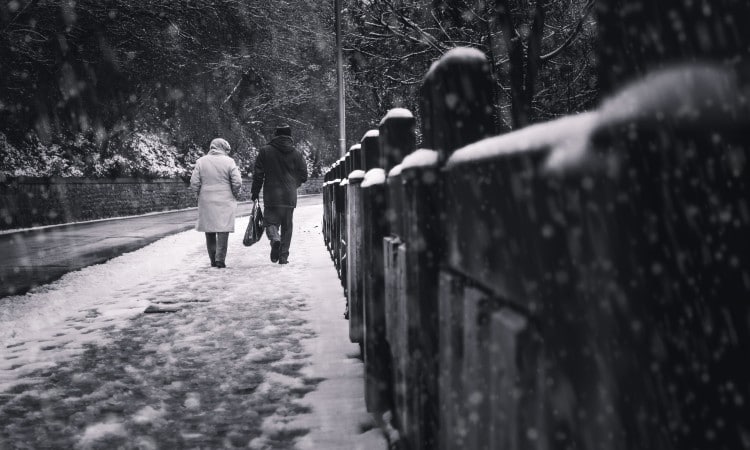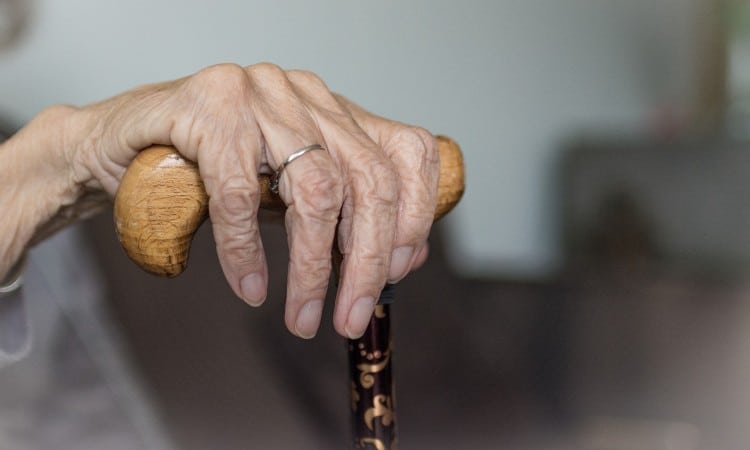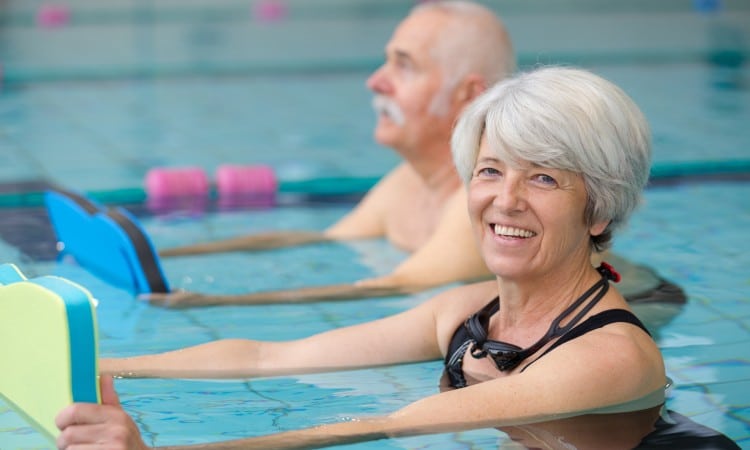Winter is a fantastic time of year that’s filled with celebration, the festivity of Christmas, and the New Year resolutions that we (sometimes) keep. But as the temperature drops, the risk of falling increases as we are faced with wet and cold weather, falling leaves, ice and snow.
Of those aged 60 and over, 30% of them will have a fall at least once a year, with this figure rising to 50% for those aged 80. These figures significantly increase in the winter months due to the hazards and inclement weather that occurs.
A fall which a child or young adult might bounce right back from may lead to more significant injuries in an older adult, as well as a great loss of confidence – but the weather should not be a reason for you to stay indoors and miss out on making new memories with your loved ones.

To help you keep safe in the colder months, here are a few simple tips to help you prevent any slips, trips and falls this winter:
Clear pathways
As the colder weather begins to set in, pathways around your home are often coated with ice and water, making it hazardous and difficult to walk on.
There may also be lots of leaves around the outside of your property as the trees begin to shed. These can quite easily block up drains and walkways, making it extremely slippy – particularly after it rains.
If you are able to, remove any trip hazards around the outside of your home and grit or salt the pathway to reduce your chance of slipping. If you struggle to do this by yourself or are worried for a loved one who you lives further away, you can always contact your local Helping Hands branch who will be able to help. The visiting care teams will be able to pop in and accompany you out of the house if you’re at risk of falling.
Choose the right shoes
It’s really important to wear the correct shoes during the winter. Those with a strong grip or thick rubber soles are great protection from slippery surfaces and will make you feel much more confident on your feet when you’re out and about.
For conditions that can affect feet such as dementia, diabetes and Parkinson’s, it’s vital that you keep your feet healthy by keeping your toenails trimmed, ensuring corns and calluses are treated, and always wearing a pair of socks that don’t have an elasticated top that restricts the blood flow around your ankles and feet. Non-elasticated socks are quite easy to purchase online or from some of the big high street retailers.
Consider a mobility aid
If you find that you are less steady on your feet in the colder weather, it might be worth considering a mobility aid such as a walking stick to help you with your balance.

There are plenty of walking sticks available to purchase or you can even borrow them from the NHS to see if they work for you. It’s always best to consult your GP if you are considering this as a long-term option, who may put you in touch with a physiotherapist.
Keep your hands free
Try to avoid walking with your hands in your pockets as you may need to react quickly to regain your balance.
Whenever you go outside, make sure that you wear a pair of gloves to keep your fingers warm. If you can, purchase a pair of waterproof gloves in the wetter weather. This will ensure that the heat from your hands isn’t transferred to the air instead of circulating the warm air through your gloves.
Gloves with textured fingers and palms can also be great protection for your hands. They allow you to grip on to bannisters or walking aids, whilst still keeping your hands and fingers warm.
Gentle exercise
The more you move around, the better your energy and strength levels will be, which will help with reducing the risk of your limbs and joints getting stiff when you’re outside.
Doing simple strength and stability exercises at home are fantastic for improving your balance; there are a number of simple stretches and exercises that can help with keeping your body in good condition.

Poor posture can be another contribution for those at risk of taking a tumble, which is more common for those living with conditions such as arthritis. Make sure you try to maintain a good posture at all times when you are home, particularly when you’re sitting down. Also, doing exercises that don’t put too much strain on your joints – like swimming or walking – are great for keeping your strength up without agitating your arthritis.
If you or a loved one needs extra support over the winter months, you can find out more here.
